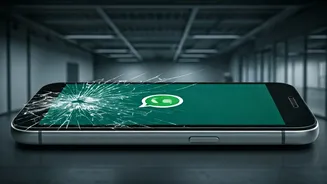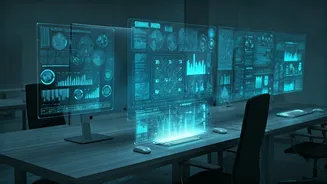The Unexpected Inquiry
The crux of the matter revolves around a newly hired employee who, in a display of what the manager perceived as a lack of professional judgment, sent
a WhatsApp message directly to their superior. Details of the message are missing, but the core issue was the employee's choice to use an informal messaging platform for a work-related query. This action caught the manager off guard, as it challenged the conventional boundaries typically maintained in professional settings. The manager was quite surprised by this casual mode of communication, especially given the hierarchical structure and formal protocols generally expected in the workplace. The lack of prior acclimatization to the workplace's communication methods and the immediate use of a personal messaging app raised concerns about the employee's understanding of professional boundaries.
Manager's Initial Reaction
The manager's response to the WhatsApp message was one of significant surprise. The manager's reaction, described as 'shocked,' underscores the degree to which the employee's action defied expected protocols. The manager's feelings reflected an expectation for more formal modes of communication, such as email or official messaging platforms, especially during the initial stages of employment. The 'shock' was not just a passing sentiment, but a reaction that brought into focus the employee's grasp of workplace etiquette and professional boundaries. This initial response would likely influence the future interactions and the manager's perceptions of the employee's professionalism.
Contextual Considerations Emerge
Several factors come into play when analyzing this situation. The lack of detailed information about the question itself leaves room for varied interpretations. For instance, the urgency or nature of the question could have influenced the employee's decision to use WhatsApp. Furthermore, the existing communication culture within the organization remains a crucial point to address. Was there an established protocol for contacting superiors, or had the employee not been properly briefed on communication channels? The size of the company and the technology at its disposal, along with the degree to which employees were trained in the organization’s communication protocols and use of technology, would also impact the situation. These considerations highlight the importance of recognizing the unique circumstances and organizational dynamics at the heart of the interaction.
Impact on Workplace Dynamics
The incident had potential repercussions for the dynamics within the workplace. The manager's reaction could set a precedent for other employees, influencing their conduct in formal and informal communication settings. If the manager chose to address the issue head-on, such conversations might reshape expectations surrounding the use of personal communication tools in professional contexts. Conversely, if the issue was not addressed effectively, the incident might blur the boundaries between professional and personal communication. The underlying atmosphere within the team is affected either way, shaping the organization's communication practices. The situation provides an opportunity for the organization to review and adjust its communication policies, helping create a better sense of order and promoting a workplace culture built on mutual respect and professional behavior.
Promoting Professionalism
The incident sheds light on the crucial role of promoting professionalism in the workplace. Organizations must establish clear guidelines for communication, outlining appropriate channels and response expectations. Regular training sessions that cover professional communication etiquette can aid in preventing misunderstandings. Additionally, organizations should develop a culture that promotes open and constructive dialogues about communication practices. Mentoring and feedback can also help new employees understand the norms and expectations of the workplace. Such initiatives can ensure that employees are well-versed in professional communication protocols, reducing the likelihood of scenarios like the one described. Reinforcing these standards is important for maintaining effective professional relationships.











